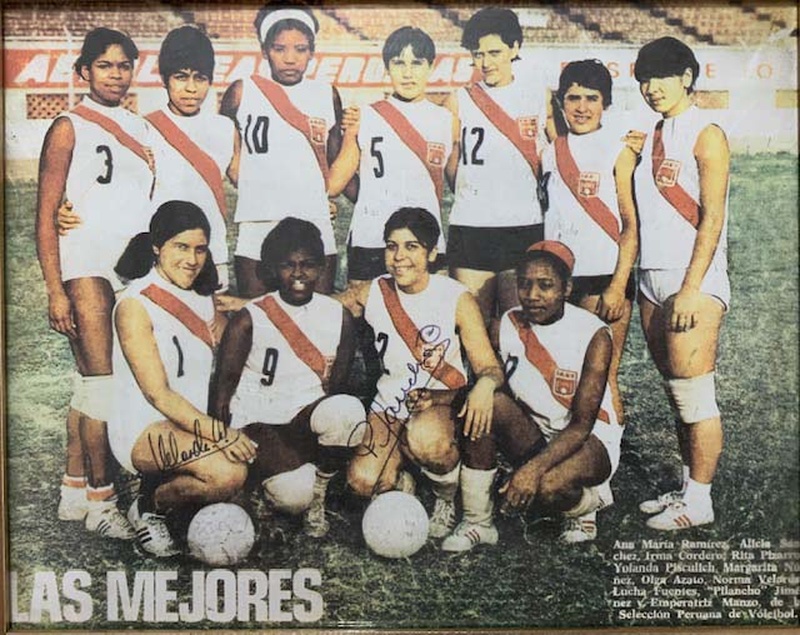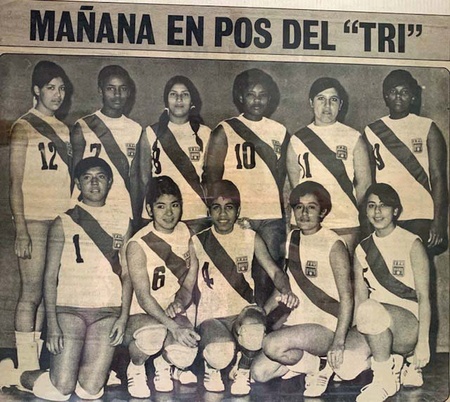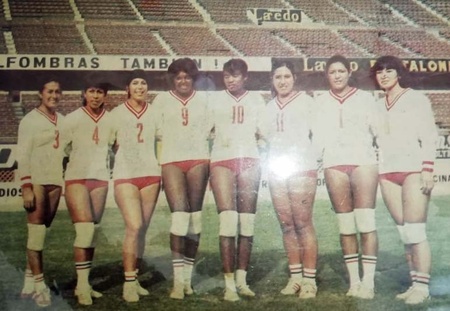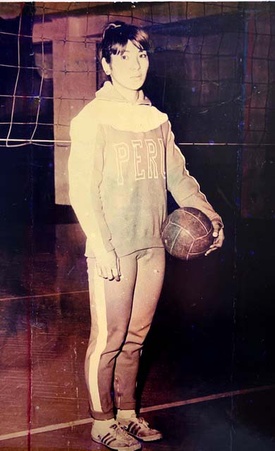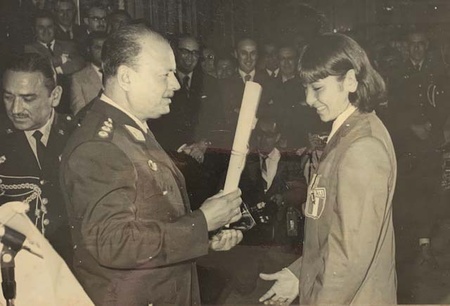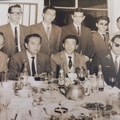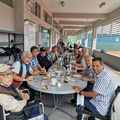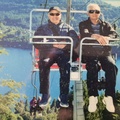Three in the morning and the ringing of the clock did its job. Many homes in the country had their eyes fixed on the television and far, far away from the homeland, with the red and white in a rectangle of life that showed us the strength and talent of six girls who, with the power of the game, made Peruvian volleyball the habit of seeing them on the front page of newspapers, in sports articles, in the clamor of gatherings, in the figurines in an album, in the report of a flash on TV or in the forgotten place of some hamlet, where the Dust is part of life and the faithful custom of a ball that rises in its hands and pretends to have the mystery of a fair and updated sport.
The Japanese colony of the sixties swollen with pride for a little girl who made volleyball her daily passion. His promising strength, his unattainable stature, his last name linked to the community, the amazement of his imperturbable face and the feelings of thousands of Nikkei who cried out in silence (because that's how we were, perhaps because of the Second World War or because as children they instilled in us not to show our feelings).
But how we jumped when Olguita Asato entered the court and showed us the reason for her position on the Peruvian volleyball team! There, in that elite of great players, with Lucha Fuentes, Pilancho Jiménez, Irma Cordero, Maruja Ostolaza, Norma Velarde, Mercedes Gonzales, Ana María Ramírez, Alicia Sánchez, Anacé Carrillo, Teresa Núñez, Maruja Ponce, Rita Pizarro, Delia Córdova, Martha Vergara, Blanca Jiménez, Aída Reina, María Cervera and Gaby Cárdenas.
We felt we loved the country more and we saw our illusions fly in the red and white, we shouted every point won or defended, we saw that all the blood was one. The chola, the black, the mestiza, the white and the yellow who gave us a concert of serves and strategies, of dunks and defenses, of shouts and sweat, of cheers and victories, of tears and laughter, of oles and murmurs, and of moments when victory finally arrived.
How much of that was the work, the effort, the time, the distance from the family, not being with friends, the feeling that a youth dance was lost in the playing field. And that all the looks were only judging the given match, the strategy found, the pain in the loss, the rushed trip without family, and that injury that would be resignation in the future for the effort of a brilliant youth in cheers of a country. That was the sign of every good athlete who reaches the divine summit.
And let's not forget the great Akira Kato, a Japanese coach who earned the respect and affection of his players and who, during his time of work and dedication, taught them discipline, techniques, training, values and love for their country and country. family.
Olga Asato Hichiya was born in Callao. Chalaca and Buenos Aires at heart, without a doubt. Born to succeed, with a childhood of four male brothers, Carlos, Augusto, Julio and Jorge. Olguita had nothing to do at home with so many men and she went out to look for her friends at full speed and found them all in their homes. Then he returned with the same enthusiasm to continue running, the Chalaca streets were the daily training for that will that he had in his legs. A friend of the police on every corner, they invited her to sing something from their repertoire. Olguita did not have to be asked and would sing to them the latest thing on the radio that was fashionable. Years later, she would say, she lost that virtue of singing in public, but we would beat an athlete who competed in the undookai of the La Unión Stadium, in races, throws and jumps; and a star would be born for Peruvian volleyball.
Having a father who is strict in daily discipline, like Mr. Zunshu Asato was, is often overwhelming, and being the only daughter of five brothers perhaps made her the stuck-up dad. That's how upright Olga's father was as a good wrestling practitioner in Japan. Simple in the way things are done and disciplined in the education of his children. A father who, in the early hours of the morning, and without anyone noticing, would go to the newsstand only to find out in the newspapers how his beloved daughter was doing on sports tours around the world. The reason for being and the bond that unites them makes the father, in his silence, watch over his daughter on her path to glory.
And perhaps the humility of a mother, portrayed in Mrs. Ushi Hichiya, is the tradition of her beloved Okinawa, that land of origin that knew how to give us the strength and character of a volleyball player from our beloved Peru. Olga Asato Hichiya at the top of Peruvian sports: sporting laurels. This is the highest distinction granted by the Government to an athlete and is displayed on the front of our main sports venue, the National Stadium. Olga Asato is the only Nikkei lady to hold this award. She is accompanied by three sporting gentlemen from our community: Humberto Suguimitzu (billiards), Akio Tamashiro (karate) and Don Gerardo Maruy (leader).
A decade in life dedicated to his favorite sport, volleyball. Olga Asato gave her all and it was the absence at the family table, the empty place that she always missed. He learned discipline in the righteous presence of coach Akira Kato. Every night of the game or training, their personal clothing was washed by the players themselves. One night after washing, he got into the shower and while he was bathing, his polo shirt had fallen out and was blocking the drain hole. Ten minutes later, the flood attracted the presence of all the girls, who used rags to dry and drain the hotel room. Facts and anecdotes that are still present today in every conversation with her friends who gave us so many laurels and joys in the sport of high net.
The new generations of AELU athletes would be more up-to-date in their respective disciplines if the “Nikkei Athletes Gallery” existed at the La Unión Stadium. That would lead many aspirants to feel the desire to be with their idols. Olga Asato, Humberto Suguimitsu, Akio Tamashiro and Gerardo Maruy, accompanied by Gladys Moriyama (table tennis), Teófilo Toda (cycling), Isabel Onchi (bowling), Luis Minami (boxing), Juan Hasegawa (athletics), Ricardo Nakagawa and Tito Ychikawa (field tennis), among many other athletes who are examples of different disciplines.
Today the destination of many seniors is the AELU facilities. On weekdays, and waiting for the grandchildren to leave La Unión School, we grandparents are a group that monopolizes “Miss Conny's Corner.” There, their exquisite coffee is the wise tolerance of waiting and the noble attitude of making friends in our days of retirement.
It was precisely there where my friendship with Mrs. Olga Asato of Kochi began. The years will always be the support of a lifetime of sacrifices, work and glory. Olguita tends to keep quiet about a lifetime of glorious Peruvian volleyball. At first glance, no one would believe they were facing such a magnificent player who represented us on memorable days in our sporting history. Perhaps we see her smaller than in her hours of glory, but her personality, attitude and temperament will always be seen as a promise of a past of life, work, teaching and affection towards what one longs for.
It is getting dark and the first grandparents have left with their grandchildren for their homes. Olguita stands up, with her coffee in hand, and looks towards the closed coliseum. He looks for his grandson Adrián, who is taking his steps alongside his parents Juani Sakuda and Naomi Kochi Asato, a true trio of athletes who make AELU their second home.
Presence of Olga Asato Hichiya in the national team
as a player
- Olympic Games Mexico fourth place
- Bulgaria World Cup --
- World Cup Uruguay fourth place
- Pan American Winnipeg second place
- Panamericano Cali second place
- Bolivarian Maracaibo first place
- Bolivarian Panama first place
- South American Santos first place
- South American Montevideo first place
- South American Caracas second place
- South American Bucaramanga first place
As a coach
- Bolivarian Barquisimeto first place
- South American Sao Paulo first place
- South American Asunción first place
© 2020 Luis Iguchi


